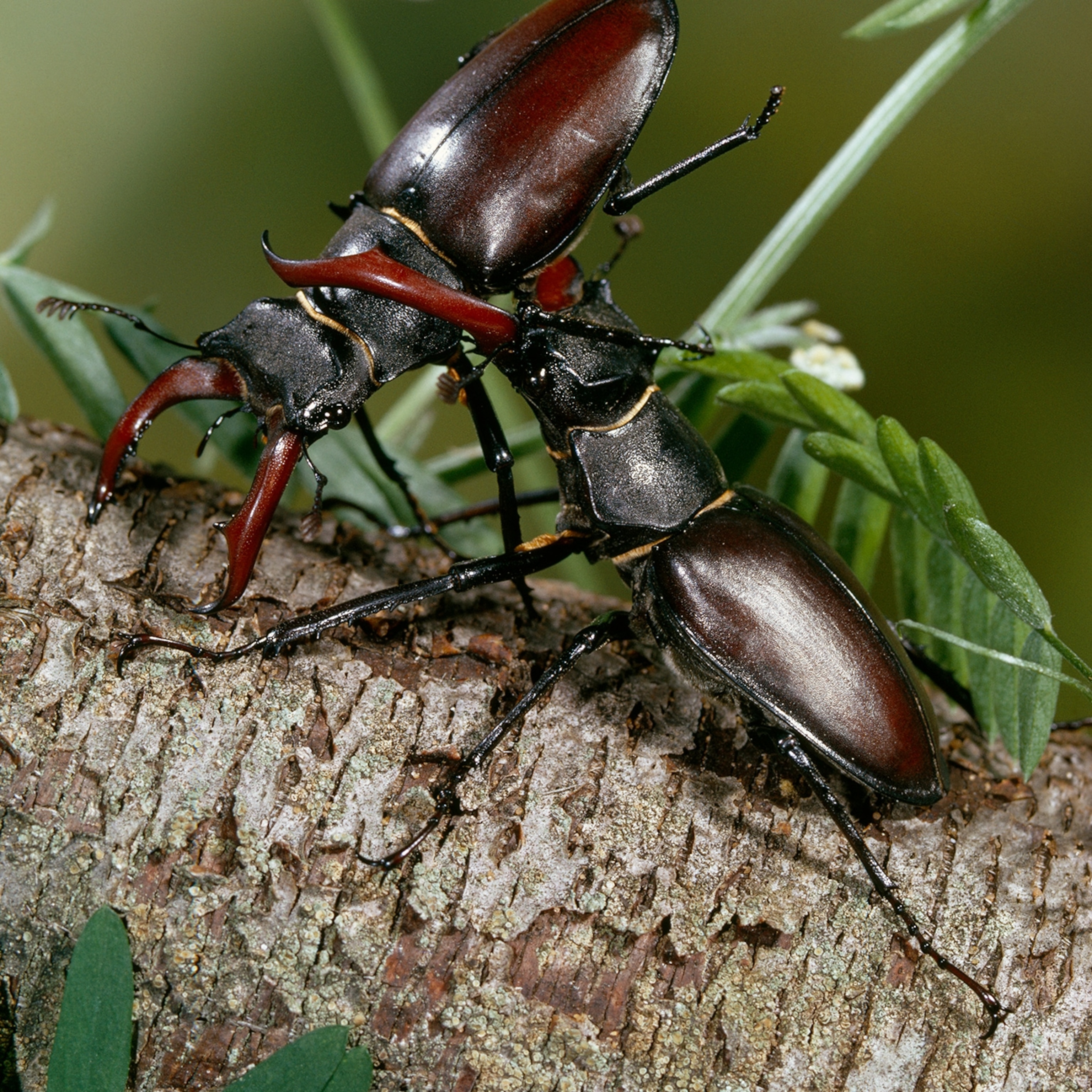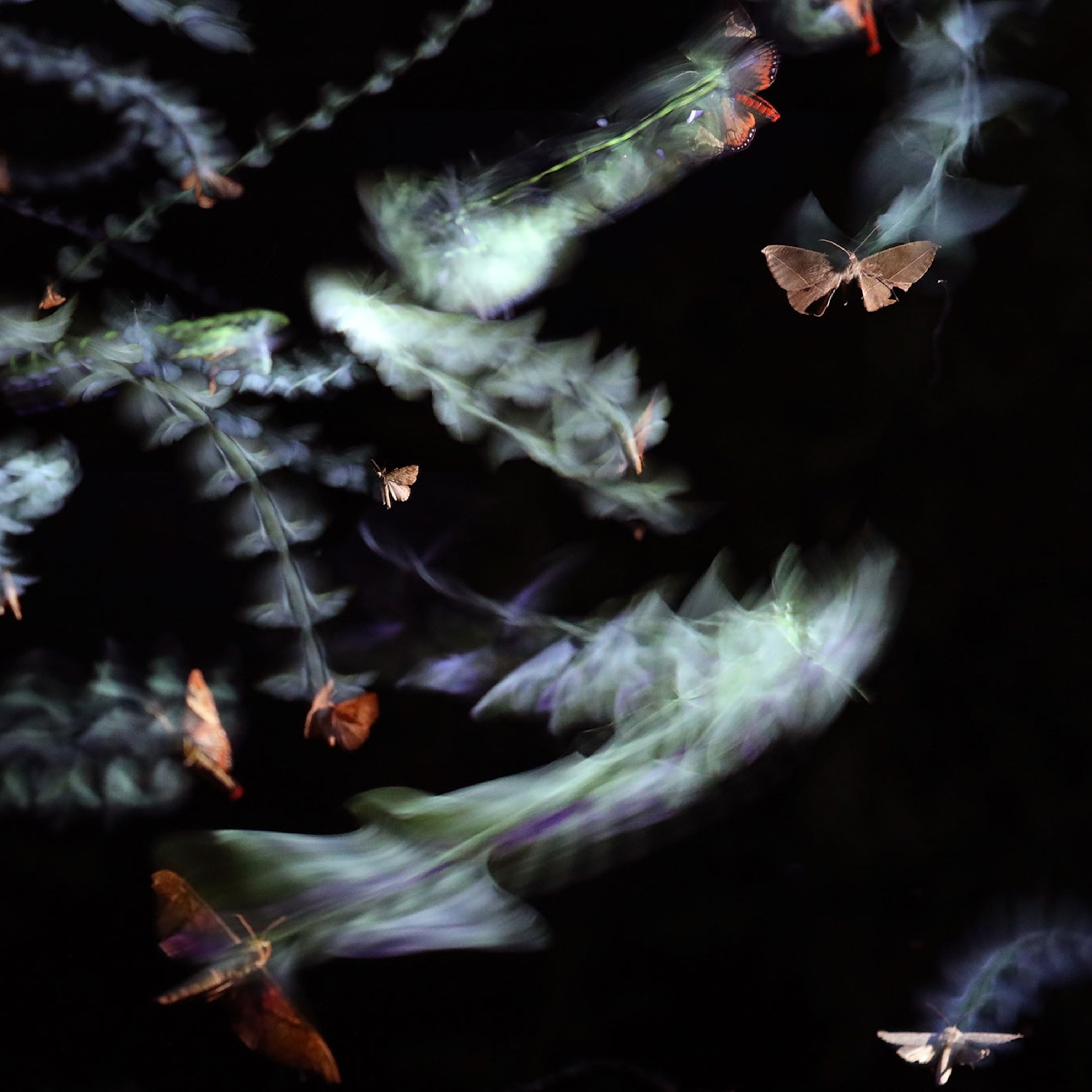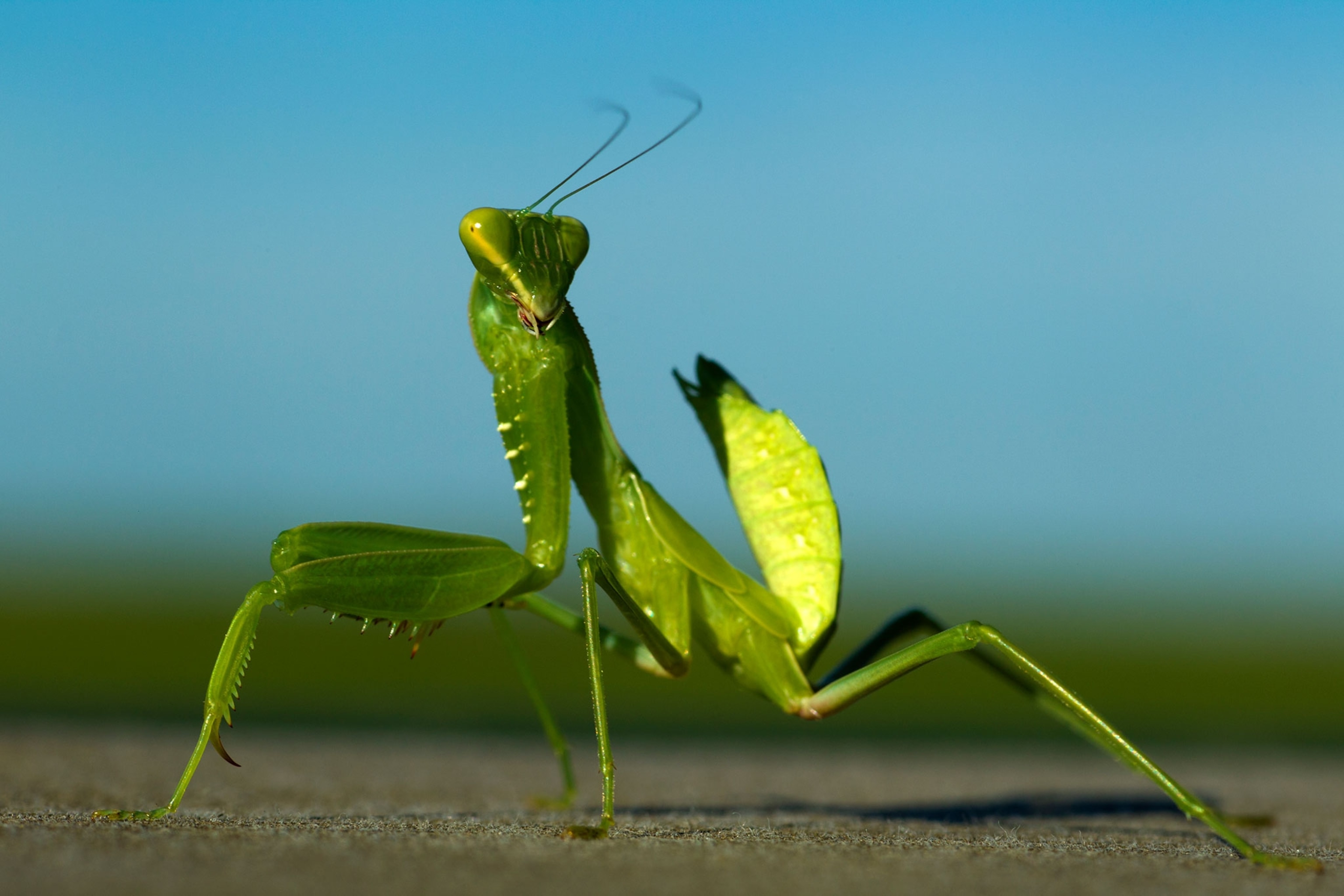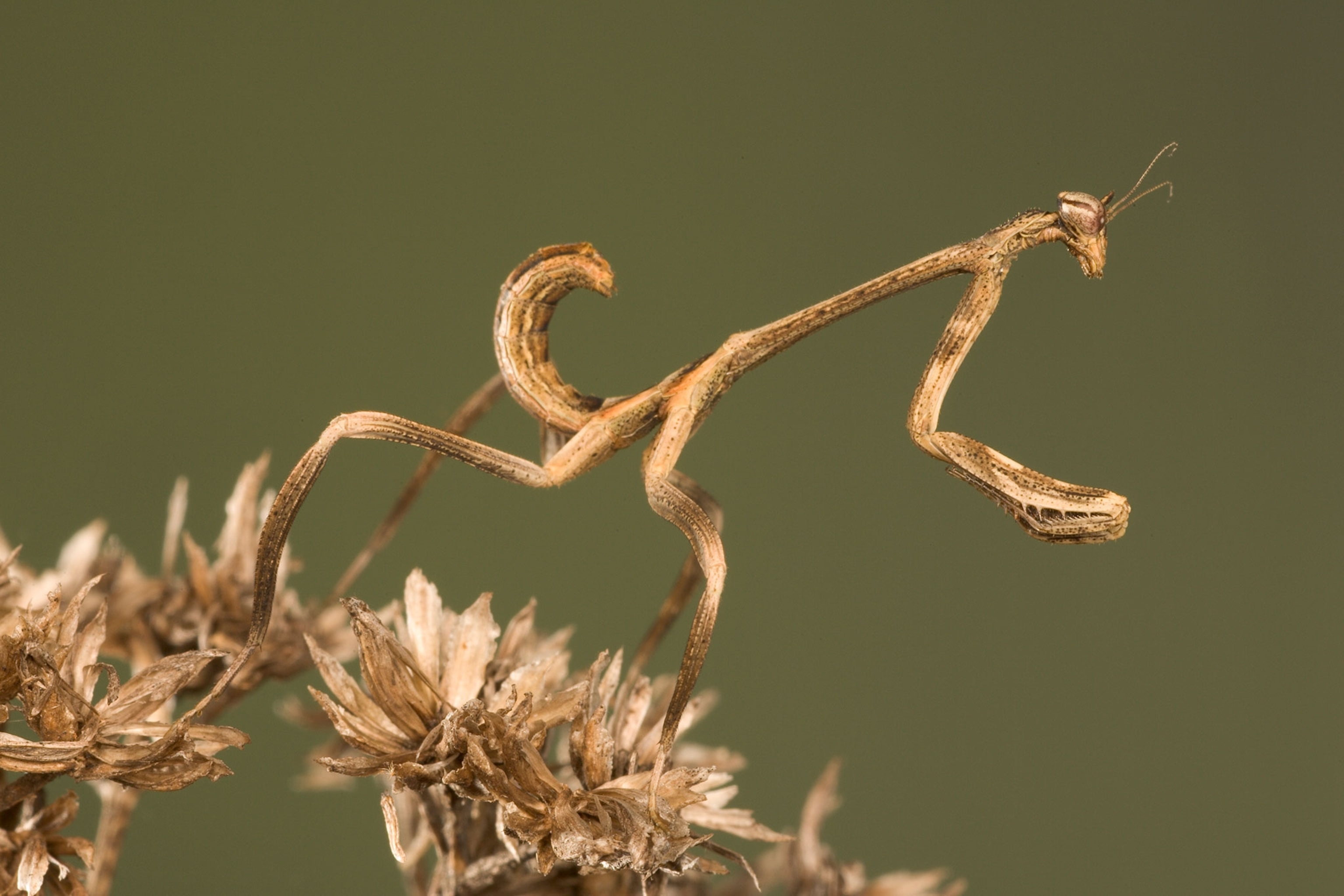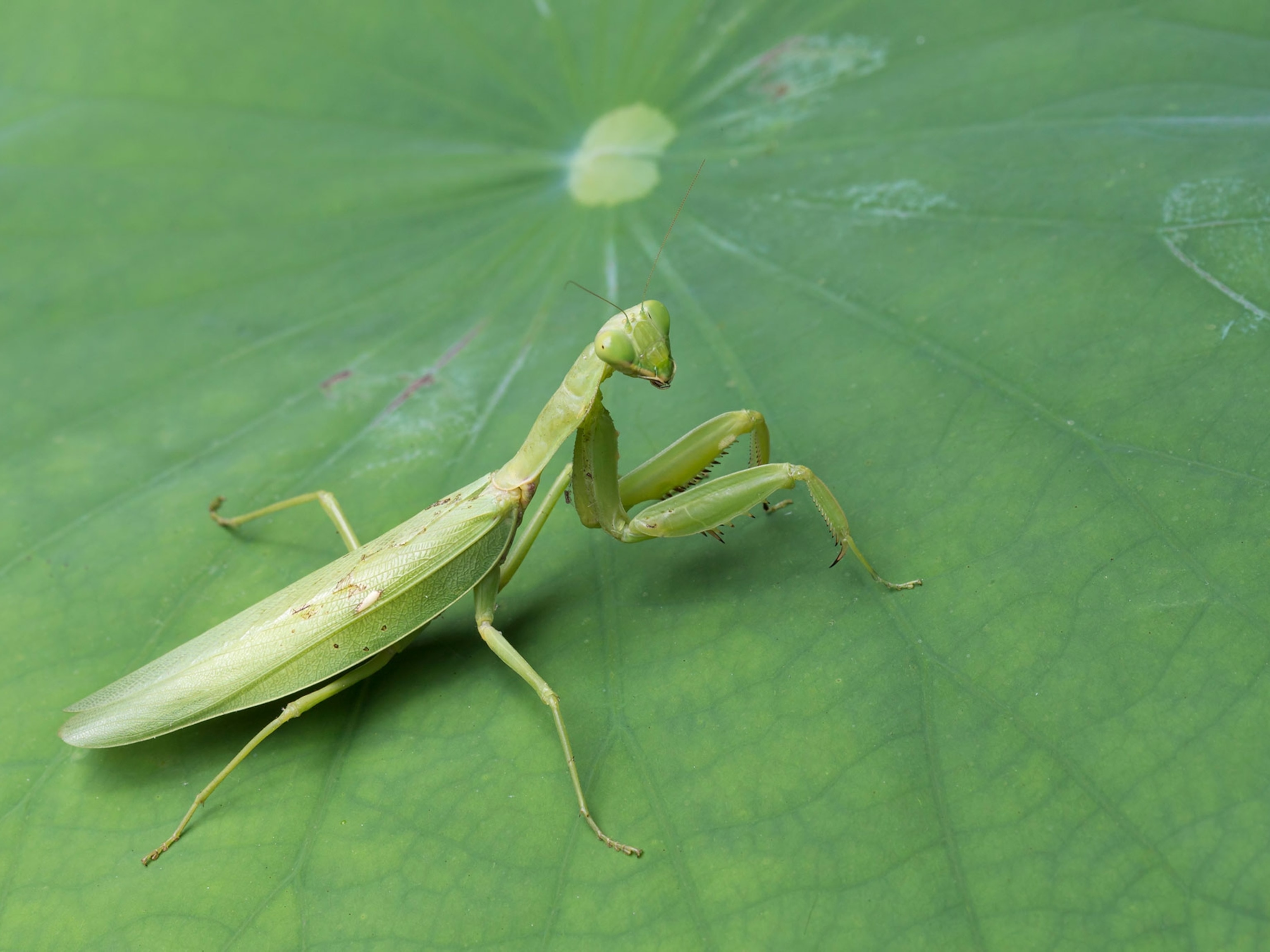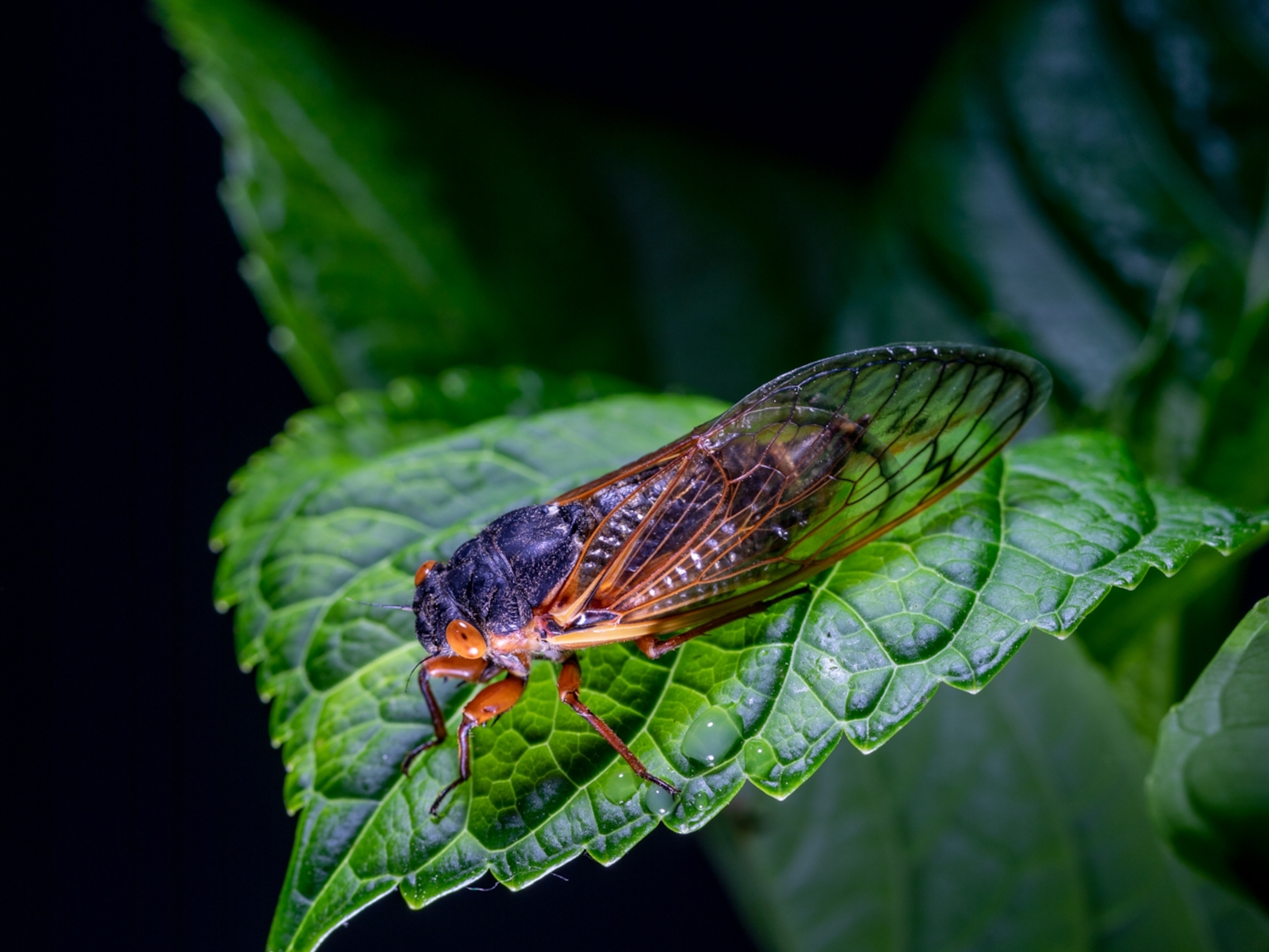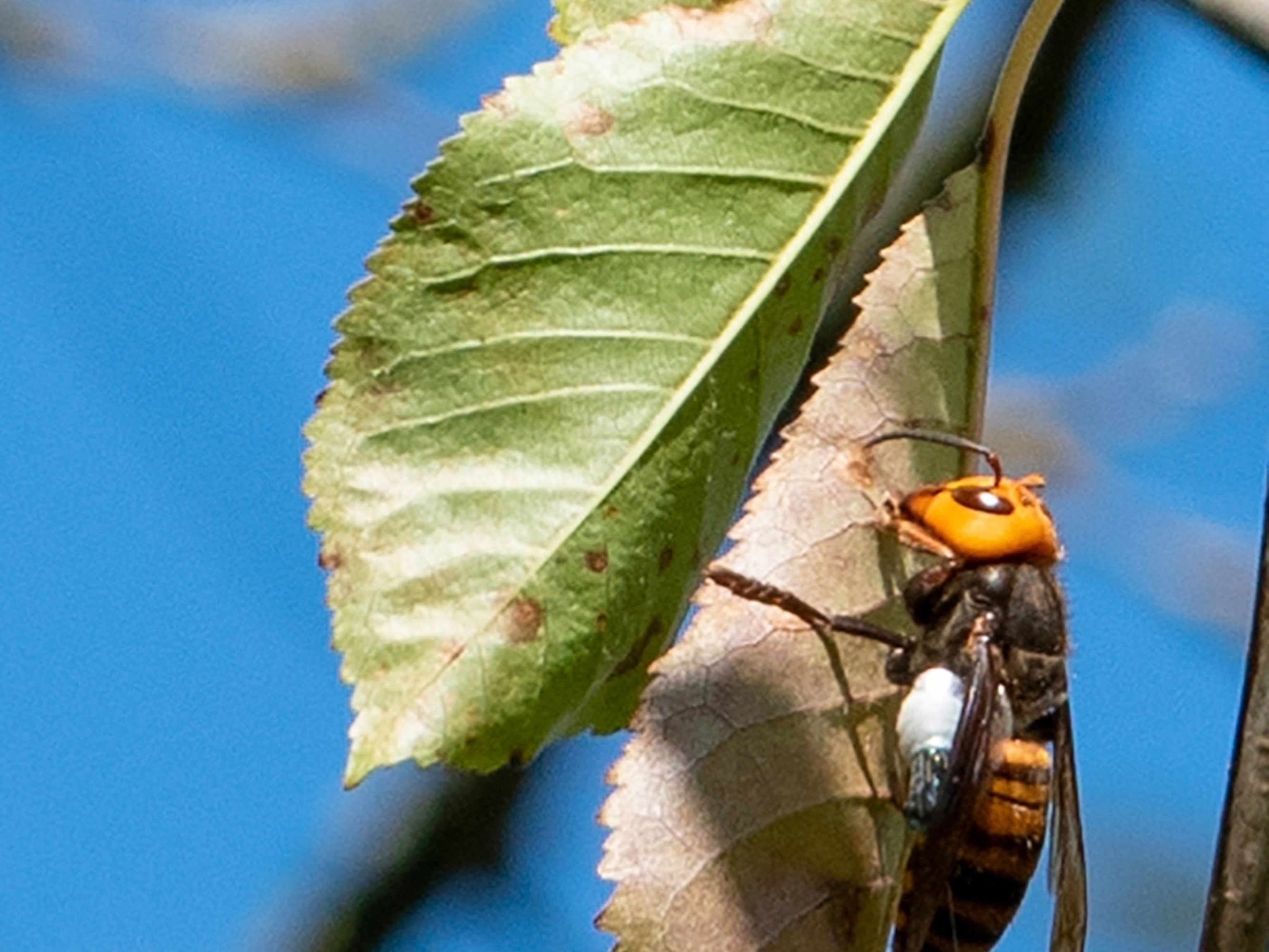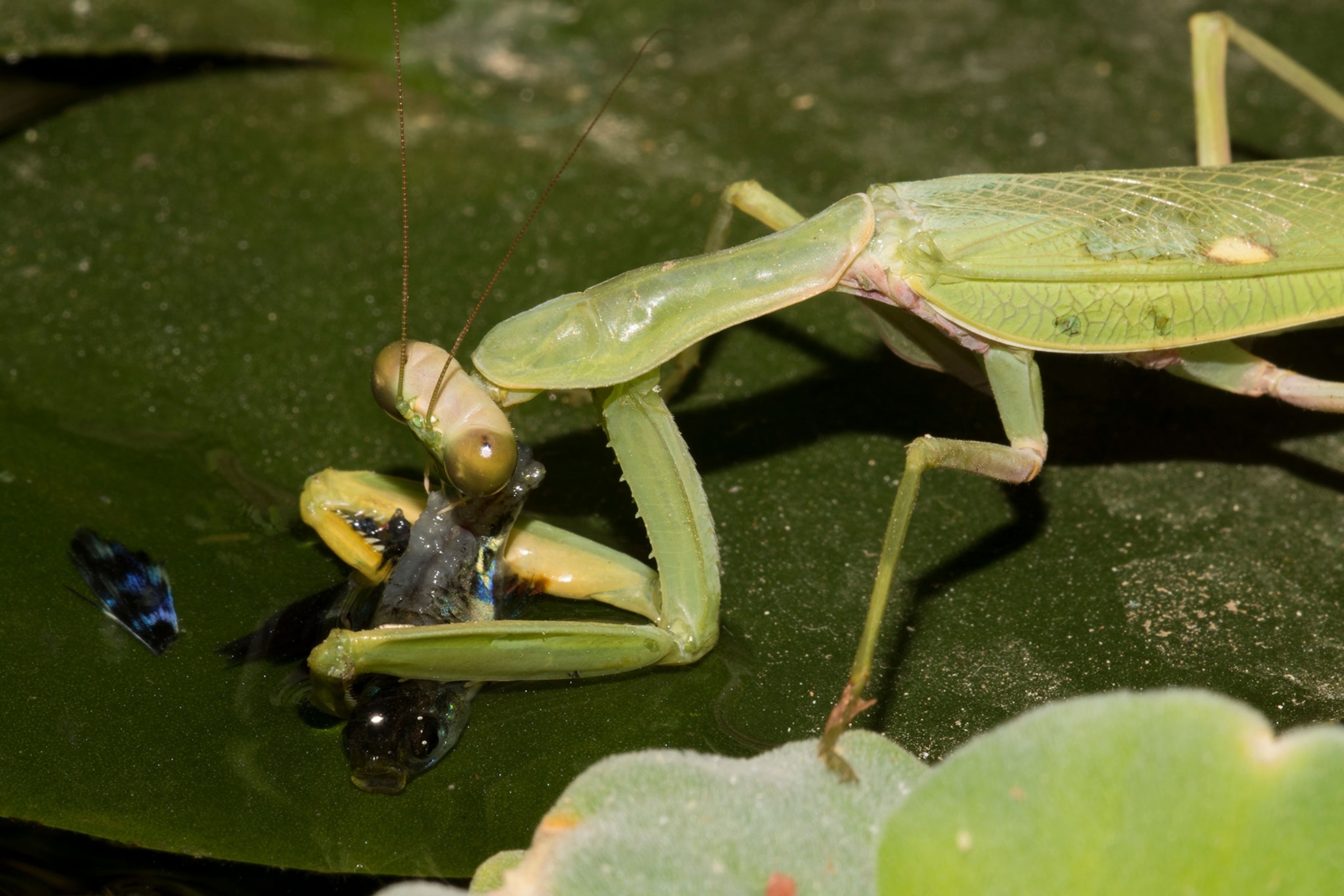
Praying Mantises Hunt and Eat Fish, in a First
Known to take down animals as large as birds, mantises have now been spotted fishing for the first time outside captivity.
Animals as large as hummingbirds can fall prey to the quick, spiked front limbs of a praying mantis. Now, it appears that not even fish are safe from this hunter’s deadly embrace.
New observations published Thursday in the Journal of Orthoptera Research describe a wild praying mantis fishing for guppies, plucking the little fish from the water and eating them—something never reported before in mantises in a natural setting.
Praying mantises are among the most ambitious predatory insects, occasionally capturing and devouring relatively huge prey, such as frogs, mice, and lizards. In that sense, fish aren’t such a stretch. (Related: Everything you need to know about the praying mantis.)
Given how mantis vision works, though, scientists were surprised the animals could even see into water well enough to catch fish. And the finding also suggests the animals may be capable of complex learning.
While you can readily find YouTube videos of mantises chowing down on aquarium feeder fish, these are forced encounters, says Roberto Battiston, an entomologist at Musei del Canal di Brenta in Italy and lead author of the study. These types of encounters involve putting captive mantises in close contact with fish to intentionally elicit a predatory reaction, similar to how many people stage “fights” between captive mantises and tarantulas or scorpions in small enclosures.
Caught in the Act
Battiston first became aware of this fishing mantis when a conservationist friend and coauthor on the study, Niyak Manjunath, sent him a photo of male giant Asian mantis (Hierodula tenuidentata) eating a fish. (Related: See the elusive Brazilian dragon mantis, a master of disguise.)
Another conservationist, Rajesh Puttaswamaiah, had captured the mantis in the act as it snatched a guppy out of an artificial pond in his rooftop garden in Karnataka, India.
Battiston says his coauthors kept tabs on the pond to see if the mantis would seek out other fish. To his surprise, the mantis kept coming back for more.
“The mantid returned not one, but for five nights, like a fox hunting chickens in a farm,” says Battiston.
The mantis would step out into the middle of the pond using floating water lily and water cabbage leaves as fishing platforms. There, it would wait patiently for a guppy to stray too close to the surface, plunging its deadly legs into the water at the critical moment to snare its piscean prize.
The mantis managed to kill and eat nine fish this way, about two a day.
A Visual Feat
The discovery is surprising not only because of the mantis’s menu choice, but also because fishing is a particular visual challenge for mantises. Mantis eyes are well-suited for spotting prey in daylight, but all nine guppies were caught in either dim light or the dark of night. Add in the complication of water, which Battiston calls a “visual barrier,” and the insect’s successful fishing seems even more impressive. (Related: Tiny 3-D glasses reveal mantis vision surprise.)
But Battiston thinks he may know how the mantis detected its victims.
“[A] mantid’s eye doesn't work like ours,” says Battiston. “They see movements better than shapes or colors. The [guppies] have a large tail they move like a flag while swimming, and it may have resembled to the mantid a strange bug scampering around.”
Jenny Read—a neuroscientist with expertise in mantis vision at Newcastle University who was not involved in this study—is surprised the mantis was able to see what it was doing.
“I wouldn’t have thought a fish underwater, at night, would have enough contrast to attract a mantid’s attention and trigger a strike,” she says.
Smart Stabbing?
The repeated fishing visits may also hint at previously unappreciated learning abilities in mantises, the authors suggest. The mantis may have remembered all the abundant, easy to catch prey at the pond, and used that information to inspire a nightly return.
It’s impossible to know what the mantid’s motivations were, says Gavin Svenson, an entomologist at the Cleveland Museum of Natural History who wasn’t involved with this study. However, he would not rule out whether such sophisticated cognitive processes are at play.
“It is a popular belief that insects are simple, hard-wired organisms. In reality, they are capable of stunningly complex behaviors,” says Svenson.
However, Frederick Prete, a neurobiologist and expert on mantis senses at Northeastern Illinois University who was not involved with this study, isn’t convinced the mantis has “learned” to fish, or that recognizing fish as prey is particularly unusual.
“Small [vertebrates] are a normal part of what they will catch, if the prey meet certain visual criteria,” says Prete.
At the very least, it’s safe to count mantises among other surprising land-based animals that have taken up fishing—like bats or spiders.
Since this is an account of a single mantis, though, it’s unclear how common the behavior may be. Svenson and Read agree it’s important to now see if other individuals or mantis species fish, in the lab or in natural settings.
For Svenson, it’s clear these elegant predators may have more up their lightning-fast sleeves than we’ve appreciated. “I believe we are just scratching the surface for what we know of them.”


